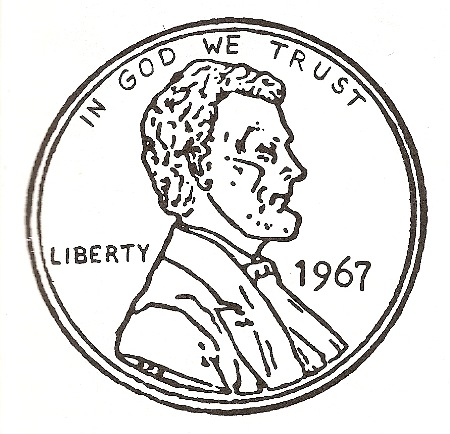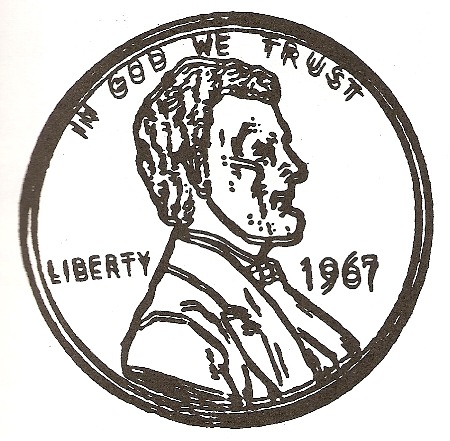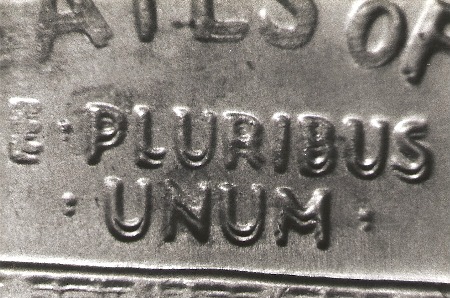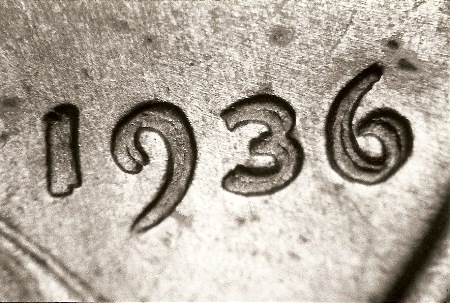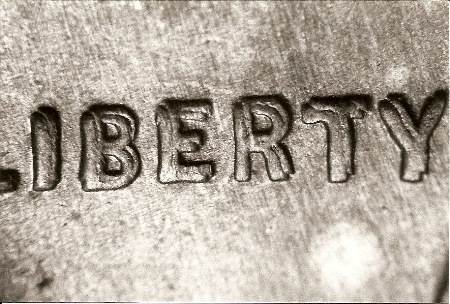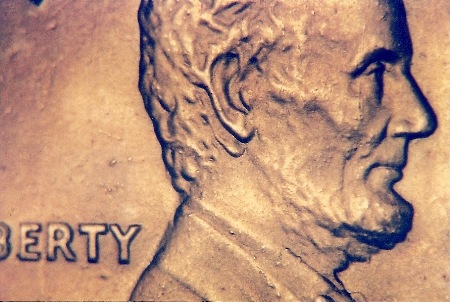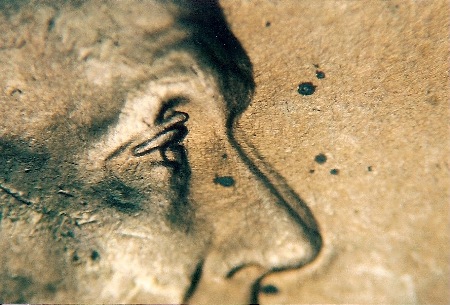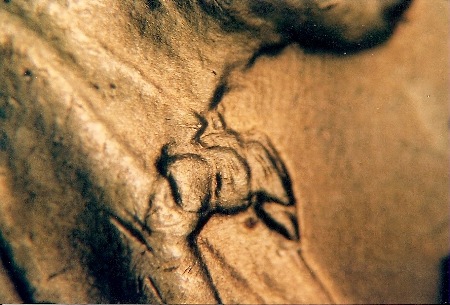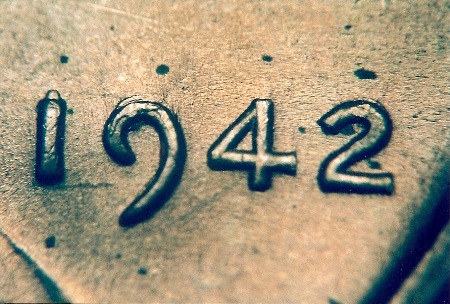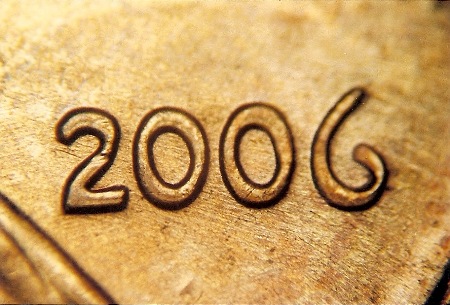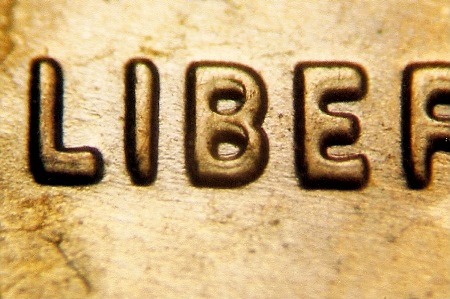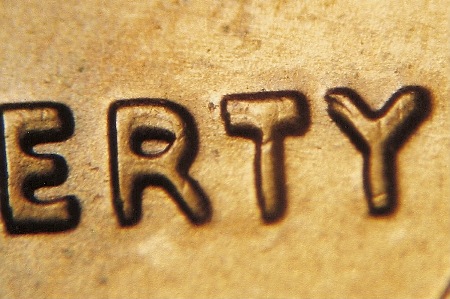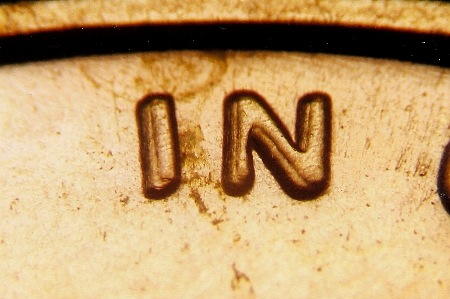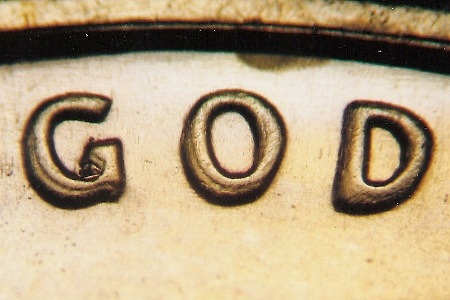


 |
 |
 |
 |
 |
 |
 |
 |
 |
 |
 |
 |
 |
 |
 |
 |
 |
 |
 |
 |
 |
 |
 |
 |
Another fairly scarce doubled die type is the Class IV doubled die variety. During the multiple-squeeze hubbing era Class IV doubled dies resulted when a working die received its initial impression, was annealed for the next hubbing, and was then returned to the hubbing press for the next impression as were all other classes of doubled die varieties. What makes these different from the other classes, however, is how the hub and die were aligned in the hubbing press for the second or subsequent hubbings. A Class IV doubled die is produced when the centers of the hub and die are not in alignment during one of the hubbings. Either the hub or the die will be "off-center" or "offset" with respect to the other. That is why the class received the name "Offset Hub Doubling." For those familiar with error coins, the setup is very much like that which produces the error coin known as a "misaligned obverse die" error. Here, when the dies are set up in the coining press their centers are not directly opposite each other as they should be. The obverse die is slightly offset. When the planchet comes in and rests on the reverse die (older press setup) and is then struck by the obverse die, the reverse will be normal but the obverse will be slightly off center. As a result of the off-centered alignment between the hub and the die for one of the hubbings, overlapping images or doubling will occur. All of the doubling will be spread in the same direction on the die and thus on all of the coins struck by that die. To illustrate the effect we took the illustration of the obverse of a 1967 Lincoln cent (Figure 1) and made a transparency of it. We took the transparency and placed it over Figure 1 so that they were perfectly aligned. We then moved the transparency slightly to the north to create the image seen in Figure 2. It is a perfect example of the type of doubling seen on a Class IV doubled die.
Figure 1 - This is the illustration of a 1967 Lincoln cent. It represents what would be seen on a die after the first hubbing.
Figure 2 - This is the doubling that resulted when we made a transparency of Figure 1. We then placed it over Figure 1 and shifted it slightly to the north. The result was Class IV type doubling all spread in the same direction. This is exactly how Class IV doubled dies were produced. A classic example of this type of doubling can be found on the 1983 Lincoln cent doubled die reverse that we have listed as 1983 1¢ WDDR-001. It is recognized as a major doubled die variety. It is a Class IV doubled die variety with the entire reverse design spread to the north.
Strong doubling spread to the north shows on the letters of ONE CENT on the Class IV doubled die reverse Lincoln cent that we have listed as 1983 1¢ WDDR-001.
Here we see the strong spread to the north on the letters of E PLURIBUS UNUM on 1983 1¢ WDDR-001. Going back further in time to the Lincoln Wheat cents, another classic example of Class IV doubling can be found on the 1936 Lincoln cent doubled die obverse that we have listed as 1936 1¢ WDDO-001. This major doubled die variety has strong doubling to LIBERTY, IN GOD WE TRUST, the date, the bowtie, Lincoln's ear, the eyelid, and the hairlines at the top of the head. All of the doubling is spread to the southwest.
The doubling seen here on the date of 1936 1¢ WDDO-001 is all spread to the southwest. It is a major Class IV doubled die variety.
Here we see that the doubling on the letters of LIBERTY on 1936 1¢ WDDO-001 is also spread to the southwest.
The doubling to the letters of WE is also spread to the southwest on 1936 1¢ WDDO-001. If you look closely, you can also see the doubling to the hair at the top of the head. A major Lincoln cent doubled die with Class IV doubling was produced in 1984 with a different twist. It is the 1984 Lincoln cent obverse doubled die that we have listed as 1984 1¢ WDDO-001. This variety shows an extremely strong spread to the north on Lincoln's ear. Other doubling can be seen on Lincoln's head, the beard, the bowtie, and parts of the vest, but the doubling does not extend out to the date or any lettering near the rim.
This 1984 Lincoln cent with a very strong doubled ear is recognized as a major doubled die variety. It is a Class IV doubled die with a strong spread to the north. We have it listed as 1984 1¢ WDDO-001. When first encounteing this variety some collectors may wonder why the doubling doesn't extend out to the design elements around the rim. If you look back at the photos of the steel die blanks on the How Dies Are Made page of this website you will notice that the face of those die blanks is slightly conical. Because of this, as a die is being hubbed the center of the die blank is the first part to receive an impression from the hub. On the first hubbing the hub may not penetrate deeply enough into the die blank to form the design elements near the rim. If the hub or die is offset for this initial hubbing and normally set for subsequent hubbings, a Class IV doubled die will result with only the central part of the design affected. That is what happened on the 1984 Lincoln cent doubled die listed as 1984 1¢ WDDO-001 illustrated above. Another strong example of a Class IV doubled die Lincoln cent where the doubling does not affect the entire design was produced on the 1942 Lincoln Wheat cents. It is the variety that we have listed as 1942 1¢ WDDO-003. This one shows a strong spread to the SSW on Lincoln's eye. Doubling shows on the 19 and slightly at the top of the 2 in the date, Lincoln's eye and nose, his ear and upper hair details, the bowtie, the Y of LIBERTY, and slightly on some of the letters of IN GOD WE TRUST.
Strong doubling spread to the SSW shows on Lincoln's eye and nose. This is the variety we have listed as 1942 1¢ WDDO-003. It is a Class IV doubled die variety.
Strong doubling spread to the SSW shows on the bowtie on the Class IV doubled die variety listed as 1942 1¢ WDDO-003.
Here we see the doubling at the top 19 and the 2 on 1942 1¢ WDDO-003. The spread to the SSW is best seen at the top of the 9. This is a class of doubled dies that apparently has not been completely eliminated by the Mint's switch to the single-squeeze hubbing process. Examples of Class IV spreads are known for coins produced during the single-squeeze hubbing era. Whether it was because Mint hubbing press opeartors stopped a hubbing press before a hubbing was completed and realigned the hub and die, or whether it was a self-contained lateral movement in the restraining collar while the hubbing was in process, we don't know. We do know that they have been produced on the single-squeeze hubbing presses. The 2006 Lincoln cent doubled die variety that we have listed as 2006 1¢ WDDO-032 is a classic example of a Class IV spread produced on the single-squeeze hubbing presses. Significant doubling spread to the north shows on the letters of LIBERTY and IN GOD WE TRUST, as well as on the date, Lincoln's bowtie, and some of the hair details.
Strong doubling, all spread to the north, shows on the 2006 Lincoln cent doubled die that we have listed as 2006 1¢ WDDO-032. It was produced on one of the Mint's single-squeeze hubbing presses, but has all the features of a Class IV doubled die variety. Other examples of single-squeeze doubled dies with Class IV spreads have been listed in my files. These give hope to collectors of doubled dies that the Mint will continue to produce doubled dies such as the 2006 Lincoln cent illustrated above. Go To: | ||


